THE 2023 COMEL AWARD FINALISTS
Jessica Mantovani
Legnago (VR), ITALY
www.facebook.com/artistaJessy
www.facebook.com/artistaJessy
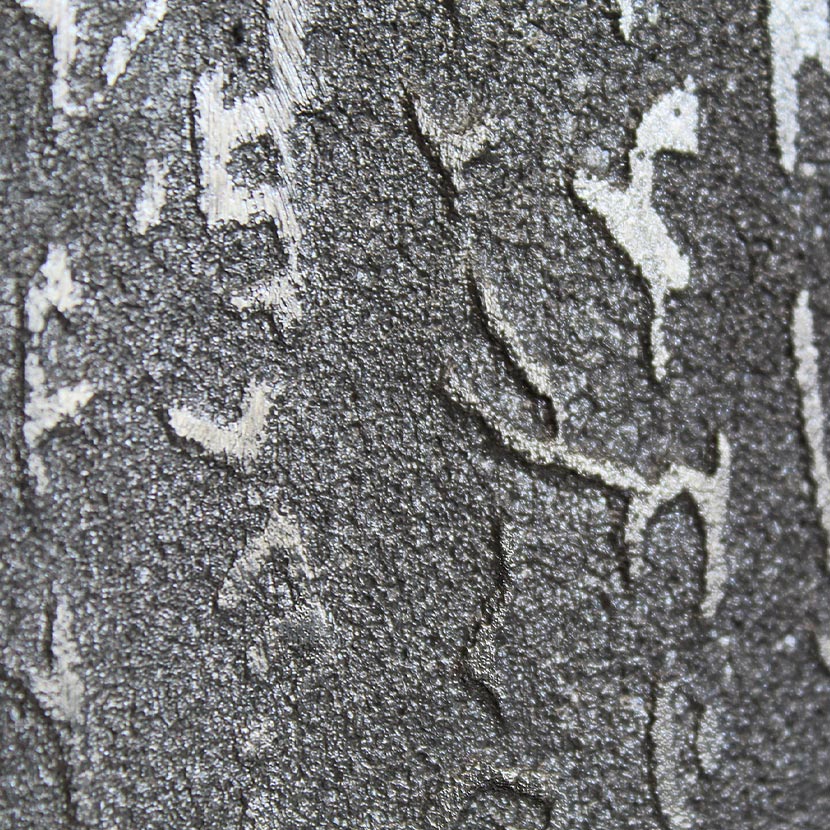

THE 2023 COMEL AWARD FINALISTS
Jessica Mantovani
Legnago (VR), ITALY
www.facebook.com/artistaJessy
www.facebook.com/artistaJessy
BIOGRAPHICAL NOTES
Born in Legnago (VR) in 1992, she obtained her high school diploma at the State Institute of Art in Castelmassa (RO) with a specialization in Decorative Painting. She is currently attending the Academy of Fine Arts in Verona. Her artistic journey began in the field of painting. It was only later, through the study of various disciplines at the Academy, that she began experimenting with sculpture, which is now her primary form of expression. Her artistic research is primarily based on the relationship between humans and nature, exploring the connections and disconnections that human beings have with nature and the world in which they live.
ARTWORK IN CONTEST
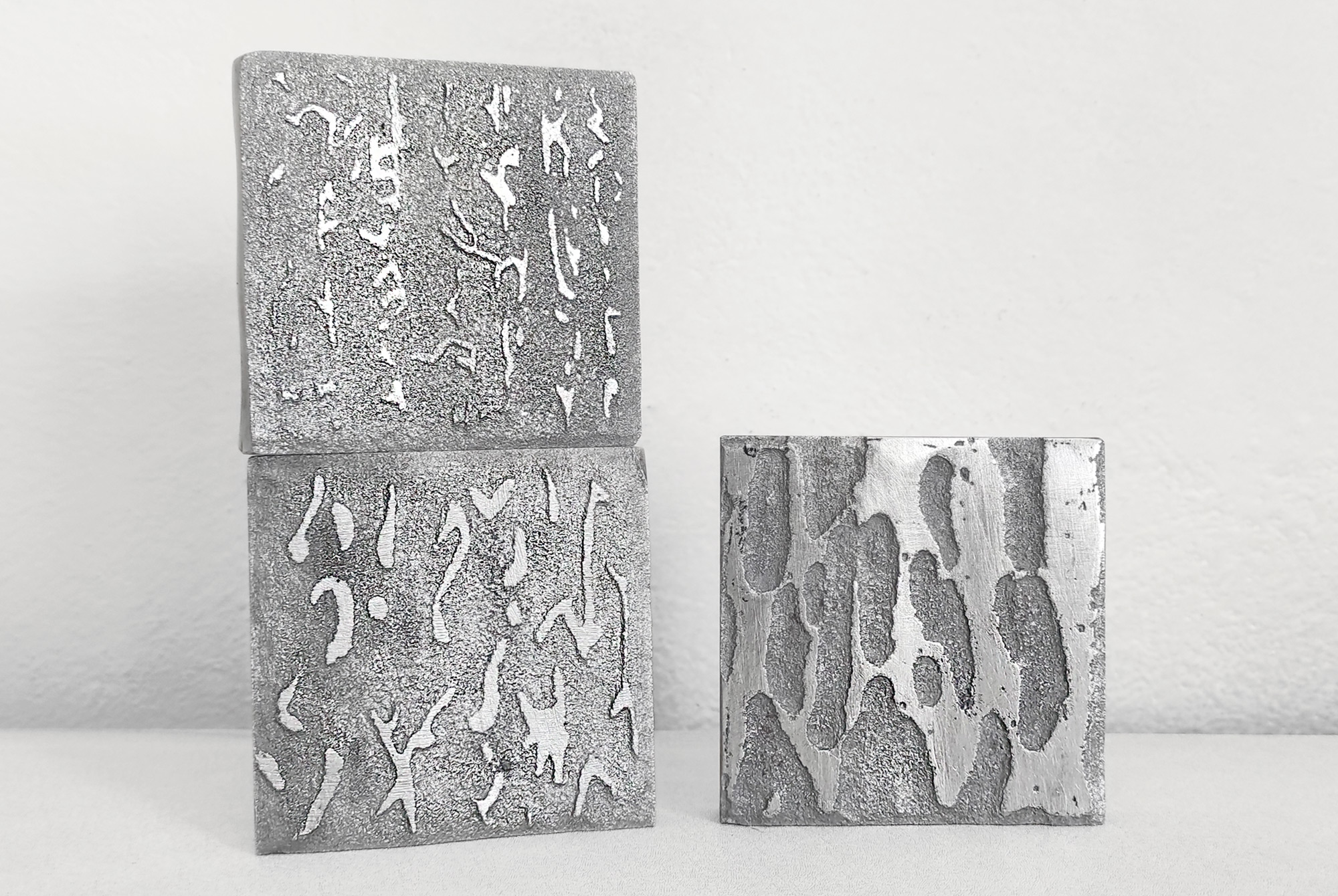
ALFABETIZZAZIONE, 2023
SCULPTURE - Aluminium casting, frottage
cm 8,7 x 9 x 2 (x3)
Suggestive is Jessica Mantovani’s operation that extracts textures and signs from nature, detecting by cast motifs and surfaces reproposed with elegant metal sculptures. The use of aluminum gives the casts something precious sacral. The casts, in fact seem, thanks to the metal, to acquire a kind of timelessness, assuming the shape of real signs of life.
AWARDS
SPECIAL MENTION OF THE JURY 2023
with the following motivation:
"In her work, aluminium becomes, thanks in part to careful metal casting, the site of a symbolic event, in which the imprints and forms of a primal nature are recovered almost sacredly."
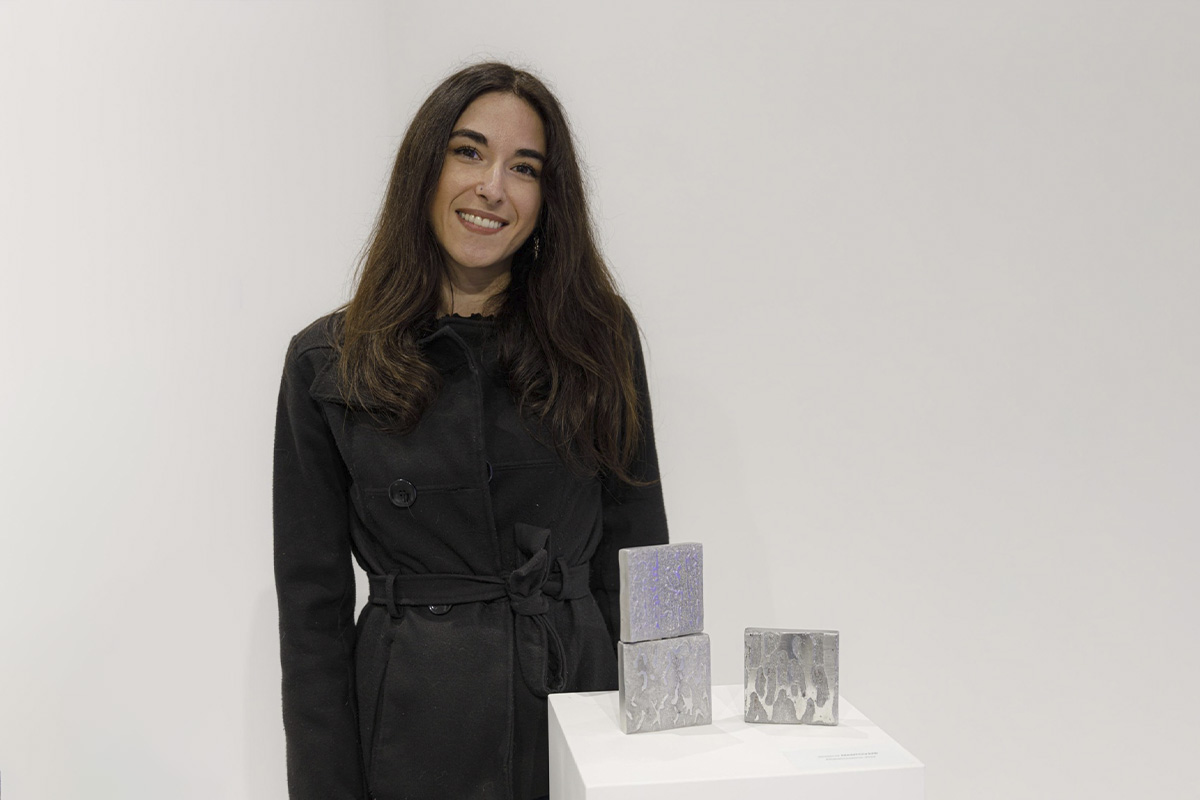
Interview by Dafne Crocella
Art creates languages. Every artist always seeks an original form of communication to push beyond the patterns of our language and express concepts through immediate forms
At the 10th edition of the COMEL Vanna Migliorin Award you presented three small square "tiles" made with a refined and long work on aluminium. Despite the small format the work caught the attention of the audience and Jury. Can you describe how you made this work?
First of all, I am grateful that my small work stood out so much that it struck the Jury and the audience. I usually tend to make very simple works, and I often don't care at all about the aesthetics of the final work. I am interested in giving strength to the poetics that is the matrix of everything. The work Alfabetizzazione (Alphabetization) was made through an indirect etching technique, whereby each individual part was dipped inside a special acid, isolating the areas that would be left smooth and then carving out the reliefs of the marks. The technical process took weeks of long work occupying full days and even nights. Every few hours I had to take the tiles out of the acid to check the level of the reliefs, at the same time, however, it only took even one more minute to ruin everything. Once the individual parts reached the desired relief, I proceeded with surface cleaning using sanding and polishing tools. Often this technical process released some deposit on the aluminium surface, so the most important step was to accurately restore the metal's original luster.
Have you happened to use the frottage technique before? Where did this idea come from? Is it your own experimentation or did you follow the suggestion of some artist?
Yes, the technique of frottage is the basis of my artistic research from which constitutes the making of my works. The idea of this technique was born a bit out of curiosity. I have always been attracted to textures in general, I liked looking at them and touching them. I remember that as a child I was taught this technique during a workshop and that by applying a sheet of paper to a rough surface, through rubbing with a chalk, the texture would re-emerge. With time and the study of art, I learned that the technique was rediscovered in a modern key by Max Ernst. Becoming more and more fascinated about this technique, I would look at the Surrealist artist's frottage works and be pleasantly amazed at how, from a simple frottage on paper, one could derive endless potential from it. It is a very easy technique and very common in childhood practices to stimulate discovery and curiosity about the world around us. Not surprisingly, in my research thanks to frottage, I repeat that gesture reminiscent of my childhood when I used to rub on leaves to see their veins. Those same textures that to this day return in my works.

Alfabetizzazione, zinc plate series, 2023
The work is made entirely of aluminium. Had you used this material before? What characteristics did you find and how does it respond to your expressive intentions?
This was my first time using aluminium. It was a pleasant and unexpected discovery in working with this very fine metal. The COMEL Award turned out to be an input in putting myself out there and trying this metal that had already aroused much curiosity in me. By chance, I was working on making a series of zinc plates. I was taking the Calcographic Engraving course in the laboratory at the State Academy of Fine Arts in Verona, so along with the series of plates I was making, I started working with aluminium. And Alfabetizzazione (Alphabetization) was born. I found that the aluminium had exceeded my expectations and that thanks to its luster and pliability, it gave power to the expressive message I intended to communicate.
The work presented at the COMEL Award is titled "Alfabetizzazione" and actually looking at the work one gets the impression of being in front of ancient tables containing alphabets, almost a kind of Rosetta Stone, was this your initial intent or looking at the material you came across this suggestion?
I'm glad you used the Rosetta Stone as a comparison, it's like you said it all in one word. It means the message got through. My intent was just that, to give back to the audience a reading of a language as old as the birth of the earth before man existed. I feel a bit like a kind of messenger whose job it is to carry a message. The message to be passed on is the language of nature, a fragile language that needs to be protected now more than ever. So yes, it is like a Rosetta Stone: a carrier of then-unknown civilizations.
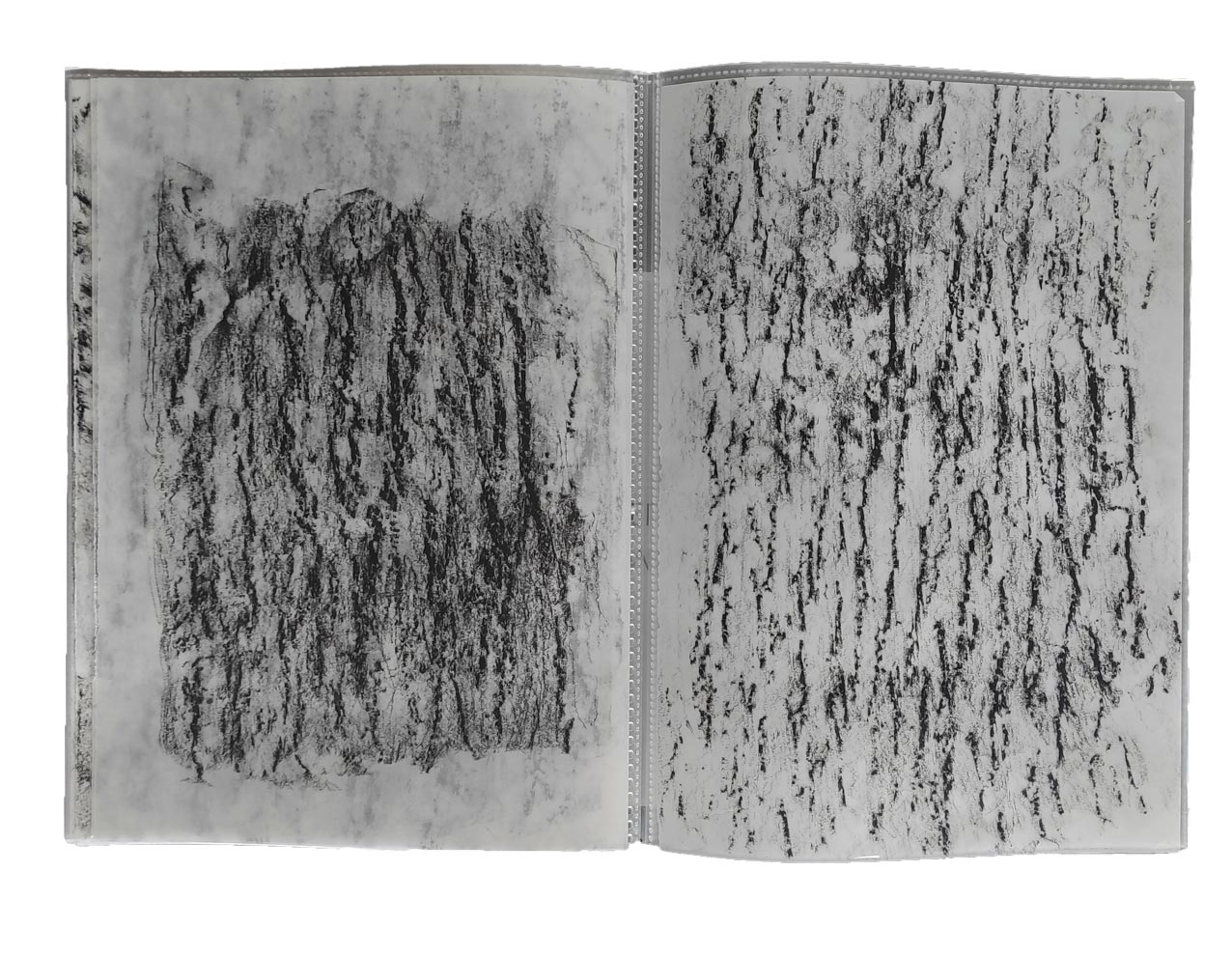
Raccoglitore, studies on textures, 2023
Art creates languages. Every artist always seeks an original form of communication to push beyond the patterns of our language and express concepts through immediate forms. In your work the theme of language as a form of communication sometimes still cryptic often returns, as if it were ancient knowledge to be recovered. How do you see the "sign" in terms of language? And how do you position yourself as an artist in the relationship between past and future?
Art creates languages, and in my case in the true sense of the word. The signs I retrieve from the natural context, I analyse them within my studio and try to intercept and decode the essentiality of each sign. In this simplification, the sign in its being undefined, premature, and even embryonic I would add, returns a symbolic concept of the primitiveness of Nature's birth. It is something difficult to explain, but the more I combined the signs, the more a writing appeared before me that kept going and kept developing. An existential language. As an artist and in my way of making art, I feel that I am a child of the context in which I live, that is historical, cultural, ecological, ethical. As art always positions itself in the era in which it is placed, so does my art, I try to bring back into my works my lived experience, my experiences and my current visions projected into the future. We live in an age where we no longer have control over our actions, and this is leading to significant consequences that can no longer be postponed. The theme of Nature is one that has always stirred my awareness, so I would like to place myself in the middle as a bridge connecting past and future by making timeless works, sealing in eternity the traces of an era in which I lived.
The Jury of the 10th edition of the COMEL Award granted your work Alfabetizzazione a Special Mention. A recognition related both to the refined technique you used and to the symbolic value of the work. Do you think these two aspects, the technical and the symbolic, are related in your work? Is the way you chose to work with the material itself part of the message of the work?
I am very happy and honored for the recognition I was given by the Jury. Technique and symbolic value are related because in working with the metal I carried out a process of excavating the surface, a bit like what happened in ancient times that to bring back symbols they used stones, boards, rocks, walls as surfaces, with which to seal the inscriptions in eternity. So the way I worked the material becomes part of the message of the work.
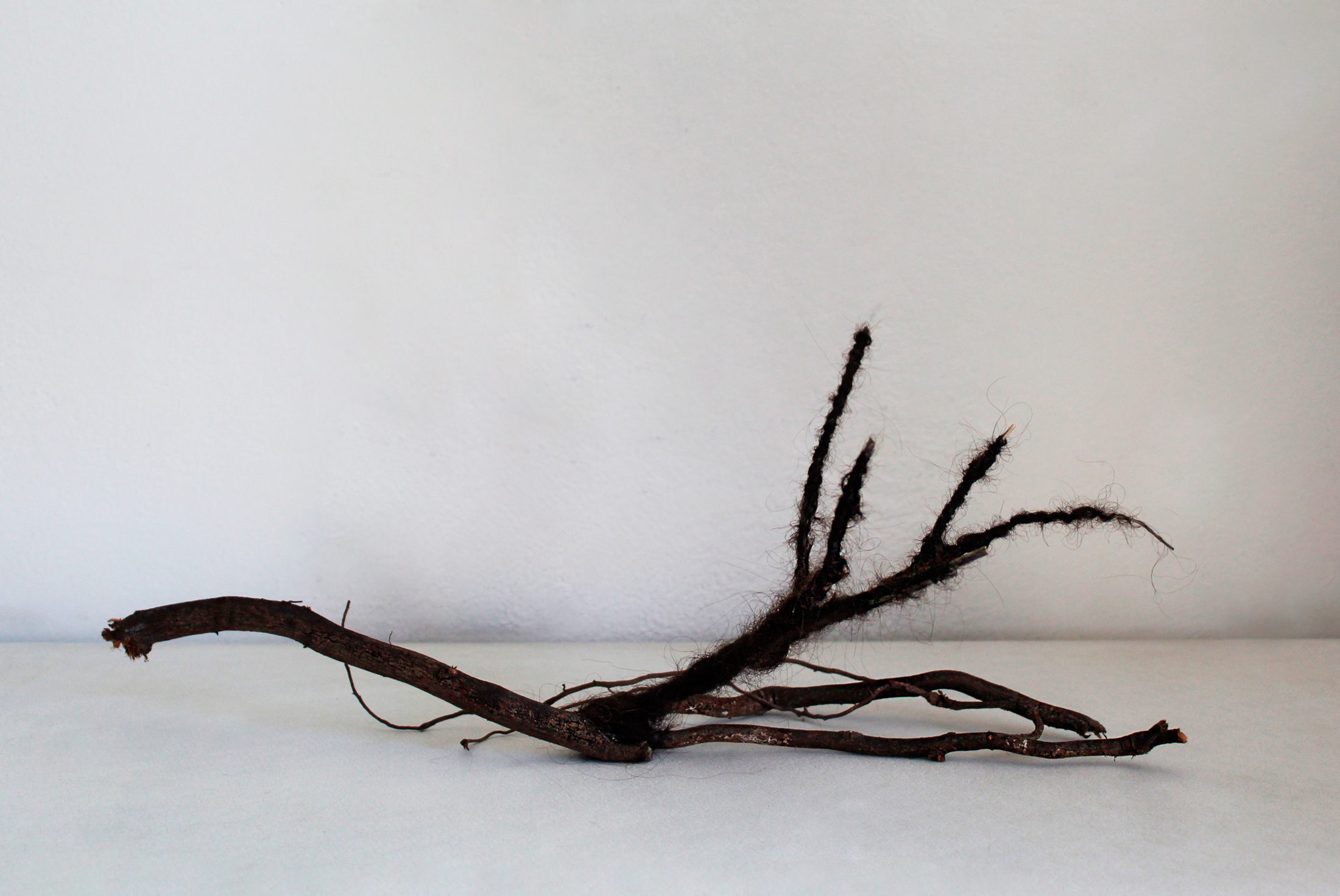
Coevoluzione, 2023
In your work you insist on the relationship between human beings and Nature by emphasizing the common points, the traces of the natural world in human beings. How much of Nature do you think is still present in the human being? And how do you emphasize this in your work?
I think that Nature is found in human beings more than we think. I emphasize this in my work precisely with the use of the signs I extract from Nature. The signs that I collect form matter and body in a unique way, just like the human being, we are the sum of many signs, our skin is composed of several thin layers of signs that overlap to make up our body. We need only look at the palm of our hand to see them. The same goes for the bark of a plant. Every life form on this earth uniquely possesses an imprint, and the imprint generates traces of existence. Consequently, human being and Nature communicate through marks.
Among the different materials you use, human hair appears. What is the origin of this choice? How do you relate to this material both from a technical and conceptual point of view?
With the study of the human-nature relationship, I also investigate the concept of metamorphosis, and this leads me to use human hair in the making of some works. The choice of this material comes from a long past experience as a hairdresser by profession. For about 15 years I worked closely with an infinity of different types of hair, developing more and more a strong manual dexterity and sensitivity to touch, being able to perceive the energies they transmitted. Hair became more and more matter for me to shape and sculpt. I would weave, cut, colour, and give different shapes to people's hair. With the artistic journey, my experience turned into art. Conceptually, the hair I use is always real, which is a key aspect of the message I want to send. In some of my works, hair is always intertwined with natural elements taken directly from the context such as branches, barks, based on what Nature provides me. Hair, an aspect that can be traced back to the human being, assembled with natural elements generates a kind of metamorphosis creating new life forms, neither human nor natural, but hybrid. Like Nature, hair also undergoes mutations over tim
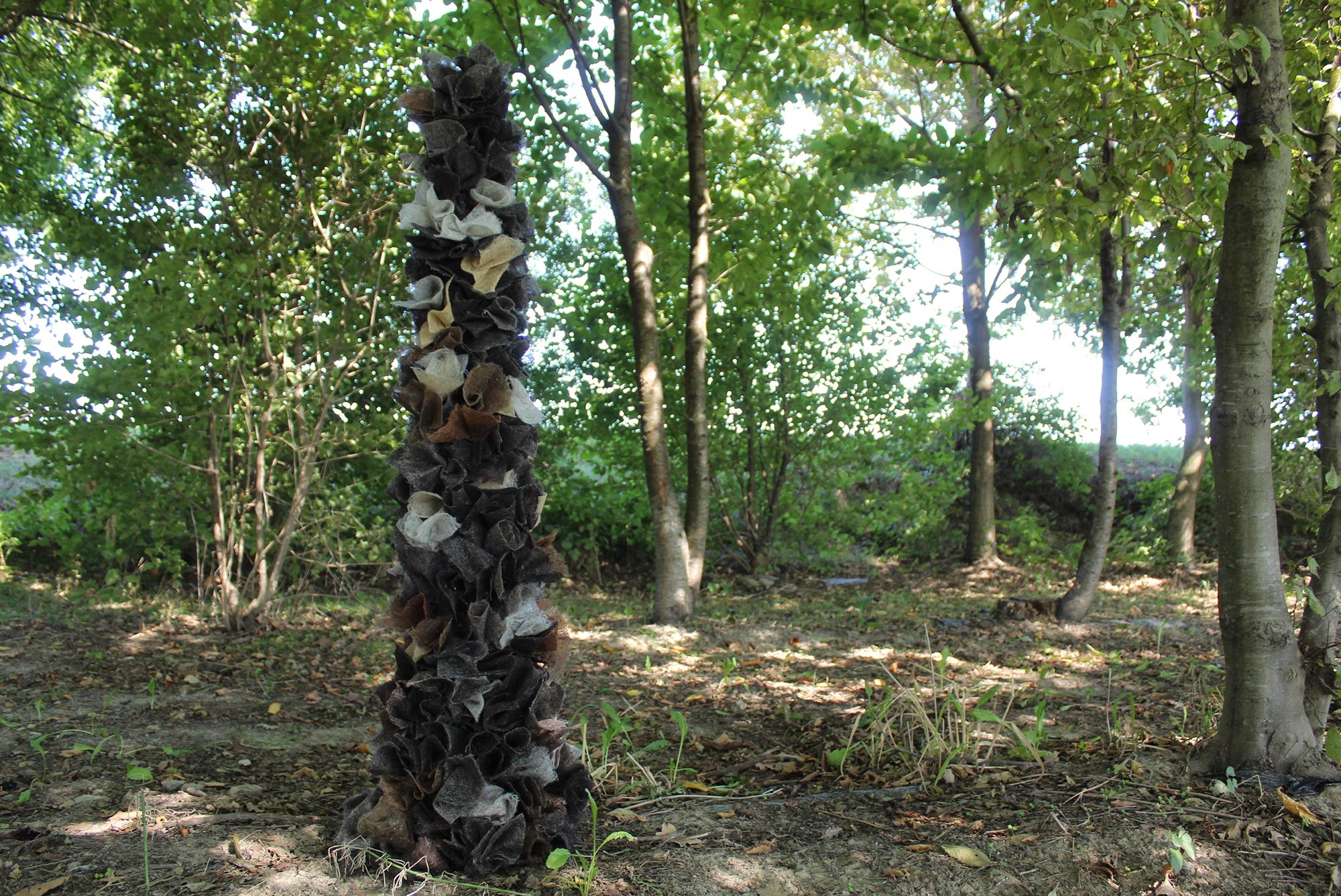
Biodiversità umana, 2022
In your work you insist on the relationship between human beings and Nature by emphasizing the common points, the traces of the natural world in human beings. How much of Nature do you think is still present in the human being? And how do you emphasize this in your work?
I think that Nature is found in human beings more than we think. I emphasize this in my work precisely with the use of the signs I extract from Nature. The signs that I collect form matter and body in a unique way, just like the human being, we are the sum of many signs, our skin is composed of several thin layers of signs that overlap to make up our body. We need only look at the palm of our hand to see them. The same goes for the bark of a plant. Every life form on this earth uniquely possesses an imprint, and the imprint generates traces of existence. Consequently, human being and Nature communicate through marks.
Among the different materials you use, human hair appears. What is the origin of this choice? How do you relate to this material both from a technical and conceptual point of view?
With the study of the human-nature relationship, I also investigate the concept of metamorphosis, and this leads me to use human hair in the making of some works. The choice of this material comes from a long past experience as a hairdresser by profession. For about 15 years I worked closely with an infinity of different types of hair, developing more and more a strong manual dexterity and sensitivity to touch, being able to perceive the energies they transmitted. Hair became more and more matter for me to shape and sculpt. I would weave, cut, colour, and give different shapes to people's hair. With the artistic journey, my experience turned into art. Conceptually, the hair I use is always real, which is a key aspect of the message I want to send. In some of my works, hair is always intertwined with natural elements taken directly from the context such as branches, barks, based on what Nature provides me. Hair, an aspect that can be traced back to the human being, assembled with natural elements generates a kind of metamorphosis creating new life forms, neither human nor natural, but hybrid. Like Nature, hair also undergoes mutations over time. Therefore, hair is part of my experience and that thanks to art it finds space to be redeemed.

